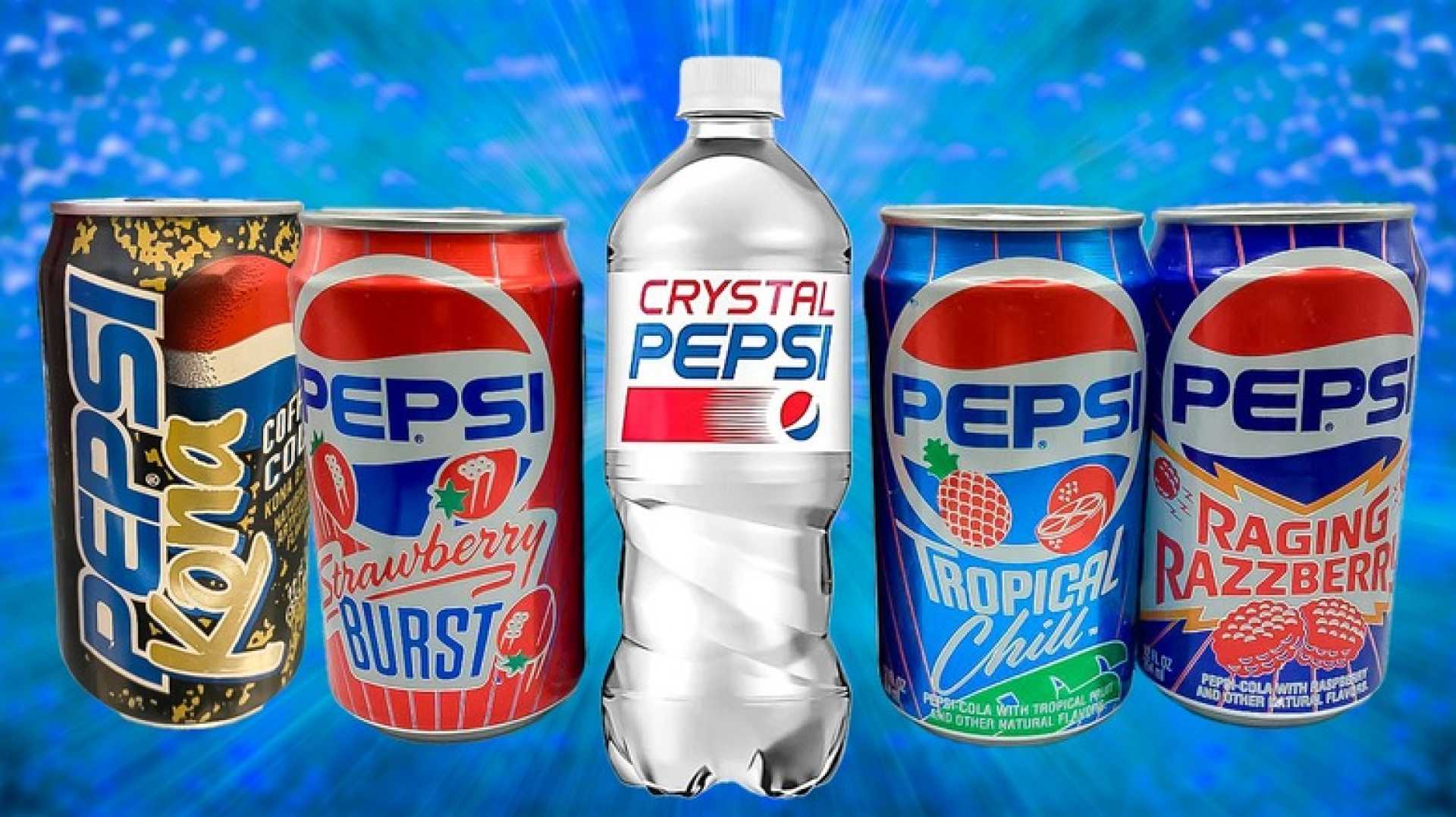Business
Pepsi’s Most Unique and Quirky Flavor Experiments Through the Years

NEW YORK, NY — Pepsi has long been known for its bold flavor experiments, pushing the boundaries of traditional soda offerings. Since its inception, the cola giant has introduced a variety of unique and sometimes bizarre flavors that have captured public attention and contributed to the brand’s identity.
Among its most notable ventures was Pepsi A.M., released in the early ’90s, which aimed to position soda as a viable morning beverage. With approximately 92 milligrams of caffeine per 12-ounce can, compared to just 38 in regular Pepsi, the drink targeted young adults and night-shift workers. However, despite its initial appeal, Pepsi A.M. was withdrawn within a year due to poor sales.
Another memorable entry from 1991 was Pepsi Raging Razzberry, a part of the Wild Bunch lineup. This bright berry-flavored soda was characterized by its magenta color and artificial raspberry taste, aiming to attract adventurous consumers amid an explosion of bold snacks and drinks in the early ’90s. Raging Razzberry garnered a small cult following but has not returned since its brief run.
Also part of the Wild Bunch was Pepsi Strawberry Burst, marketed alongside Raging Razzberry. This flavor featured a candy-like strawberry essence that resonated with the vivid branding trends of the era. Despite its striking appearance, it too faced a quick discontinuation due to lackluster sales.
Pepsi Tropical Chill completed the Wild Bunch trio, presenting a tropical twist on the classic cola formula. While its exact flavor profile remains a topic of speculation, the visual appeal and youthful marketing aimed to evoke vibrant summer memories, although it faded from shelves due to the polarizing nature of fruit-flavored colas.
In the realm of novelty, Crystal Pepsi took a bold approach in 1992 with its caffeine-free, clear cola, marketed as a healthier choice. Despite its innovative concept, consumer confusion led to its discontinuation in 1994, though it remains a nostalgic symbol of soda experimentation.
In 1996, Pepsi Kona emerged as a coffee-flavored cola, coinciding with the rise of coffee culture in the U.S. While reviews were mixed, this product paved the way for subsequent coffee soda hybrids, establishing a unique niche for itself.
Pepsi Japan’s Salty Watermelon, introduced in 2012, captured a seasonal flavor inspired by a traditional Japanese practice of sprinkling salt on watermelon. This adventurous pairing appealed to consumers looking for new and culturally diverse beverages.
Pepsi reached for innovation again with the Fire & Ice duo in the early 2000s, featuring a spicy and minty flavor effect marketed globally. Although neither achieved monumental success, they illustrated Pepsi’s push into “experience-based” beverages.
In 2002, Pepsi Blue debuted, marketed to youth consumers with its distinctive berry flavor and vibrant blue color. Despite its initial marketing efforts, it did not capture a lasting mainstream following but has cultivated a nostalgic fan base over the years.
Following this, Pepsi Twist hit shelves in 2000, providing a lemony twist to the classic formula, aimed at refreshing summer consumption. It enjoyed a brief period of popularity but eventually succumbed to declining sales.
Pepsi Vanilla, introduced in 2003, aimed to cater to the flavored cola trend with a smooth vanilla profile. Although phased out by 2005, it has made returning appearances in special promotions.
In 2004, Pepsi Edge arrived as a “mid-calorie” option but struggled to find a market amid growing skepticism towards artificial sweeteners. It was discontinued in early 2005.
Seasonally inspired, Pepsi Holiday Spice launched in 2004, capturing festive flavors of warm spices like cinnamon and nutmeg. Despite limited releases, it quickly gained a dedicated following.
These experimental flavors embody Pepsi’s willingness to innovate and explore unique taste profiles, leaving a lasting impact on soda culture.












